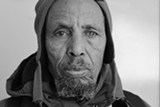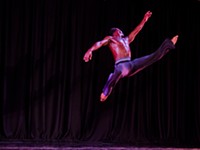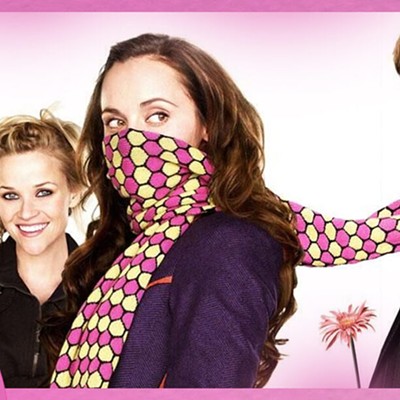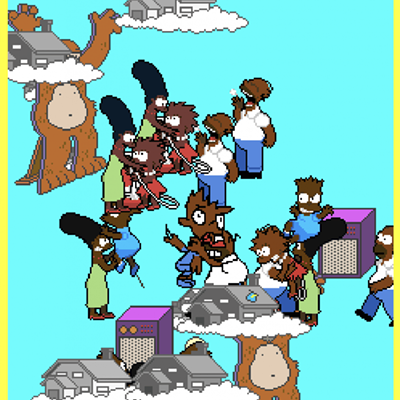[
{
"name": "500x250 Ad",
"insertPoint": "5",
"component": "15667920",
"parentWrapperClass": "",
"requiredCountToDisplay": "1"
}
]
There's a lot of talk of "two Rochesters" — cities divided by the different experiences of the haves and have-nots — but we might argue that there are as many Rochesters as there are people who live here. Some of these Rochesters remain obscure to others; while some of them expand as they come into contact with one another, swelling to include other versions. The current photo exhibit at Genesee Center's Community Darkroom explores Rochester's refugee population, depicted through the earnest lenses of some citizens who seek to spotlight what is relatively invisible.
The exhibit showcases the work of five students from Community Darkroom's "Social Reportage" class, as well as photos made by the class instructor, social documentary photojournalist Arleen Hodge Thaler. The class spent months documenting the lives of Burmese, Somalian, Bhutanese, and other refugees who, for various reasons, now make Rochester their home.
This is the second class in the "Social Reportage" series. Thaler spent years documenting life on the street in Rochester, sleeping where the homeless slept, preferring immersion to a tourist type of photography. When she was approached by the Genesee Center to teach a class on social documentary photography, Thaler had the students focus on Rochester's homeless populations and urban decay.
This time around, Thaler shifted the focus to refugees. A longtime resident of the 14613 area, Thaler was aware of the refugee concentrations in the Maplewood and Edgerton neighborhoods. She says that refugee suicide rates are high, in part due to their isolation. Without cars, and stranded in some pretty depressed areas of the city, "they're kind of confined into their homes," she says. Thaler's aim is to provide "insight into situations we don't scrutinize."
The class spent time at Mary's Place Outreach, which is run by Rochester Refugee Resettlement Services, and at Jones Square Park, which Thaler says is a gathering place for many refugees. They also spent time in the homes of the subjects, sharing meals and gaining a better understanding of how they make their way here.
Thaler's black and white images focus on families and striking shots of individuals. The image of Somali refugee, "Omar Hassan," is an intimate portrait of a world-weary elder with a cataract-fogged pupil.
In "Monger Family," a mother and daughter stand at a decorated threshold, the mother's chin lifted proudly, the daughter swathed in an embroidered shawl. Three images capture a couple, "Dil & Wife," smiling and affectionate in their humble dwelling.
April D'Amico's images of the Somali community, shot in black and white, show adults working at sewing machines, making dresses for the Dress a Girl Around the World Campaign. Also displayed with the images is a colorful frock for a tiny little girl.
D'Amico also focused on Rochester's Burmese refugees, specifically the Karen ethnic group, whose diaspora is due to attacks by the Burmese military. She captured many beautiful and expressive faces close-up, and a genuine fondness for her subjects is evident.
But the image that tells a story is "Htoo Family Birthday Celebration," in which several adults and children sit on the floor, crowded with plates of food. The packed lower half of the image is offset by the almost entirely bare, plain wall above, and the left edge of the image is framed with more activity glimpsed in next room through a doorway.
Ken Tryon's color photographs of refugee children, playing music or games, reveal the happy environment at Mary's Place. In his "Camera Curiosity" series, wonder-filled little kids interact with photographers and cameras.
In Lucas Marchal's "Jones Park #4," two people sit close to a television, eating and absorbed in the program. The space is crowded with cheerful bursts of fake flowers, and the wall space close to the ceiling is lined with OACES program and Honor Roll certificates.
Michele Ashlee's "Reflection" captures the same interior, shot from a different angle. Here, the camera points at a mirror, which reveals a seated man looking at his family from across the small space.
In "The Crew," Ashlee captured a group of young men exhibiting fashionably tough stances, posing like countless celebrity icons.
Julie Oldfield's series of images focus not only on a group of refugees, but also on their neighbors and the environment they share.
"There's been a lot of talk about the Maplewood neighborhood and the violence between the refugees and the young African-American boys there," Thaler says. In the unequal system we have, those languishing on the lowest rungs of the ladder sometimes fight violently just to not be the ones at absolute zero.
"I think there's a lot of resentment," Thaler says. "They don't feel like their voice is being heard as much as some new refugees coming in."
Amid a lot of optimistic imagery, Oldfield isn't afraid to make portraits of depression. A broken-down building and barely-legible graffiti set the scene in "Ravine and Leavenworth Street." Ditto "Scattered Homework," in which a desolate park bench butts up to a weed-overgrown chain-link fence, with discarded papers strewn on the ground.
In "Ravine Avenue," two men hunker on the front steps to a house, one engaged with his phone, the other looking away, his attention caught by something off-scene. A jug of fruit punch sits at the low edge of the image, its vibrating red color noticeably missing in the black-and-white image. While the tension Thaler describes between the two groups isn't captured overtly in the images, it's not difficult to deduct that there would be conflict over what little of Rochester is offered to them.
Thaler says that her work aims to promote awareness and conversation, so we can come up with viable solutions to problems like homelessness and poverty. And while she wants to be known for her work, she doesn't want to exploit the subjects. Thaler regularly gives portraits to the people she photographs, and for this project, she invited the subjects to the show opening, which was a packed, multi-cultural party, and an opportunity for the communities to make some money. The Somali refugees sold Sambusa, a type of meat-filled pastry, the Bhutanese were selling purses and dresses they had made, and attendees could get their hands painted with henna.
One of the project's eye-openers, Thaler says, was that language wasn't as big of a barrier to forming connections as we might expect. She has plans to work with migrant farmers next, potentially in the springtime.
Speaking of...
-
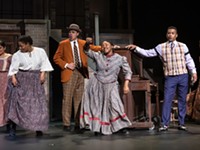
“Ragtime” evokes history through rhythm and rhyme
May 8, 2023 -

Film review: 'Ralph Breaks the Internet'
Nov 27, 2018 -
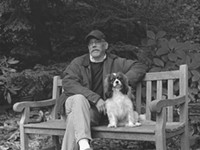
Back to darkroom basics with 'Under Safelight'
Nov 30, 2016 - More »
Latest in Art
More by Rebecca Rafferty
-

Beyond folklore
Apr 4, 2024 -

Partnership perks: Public Provisions @ Flour City Bread
Feb 24, 2024 -

Raison d’Art
Feb 19, 2024 - More »
